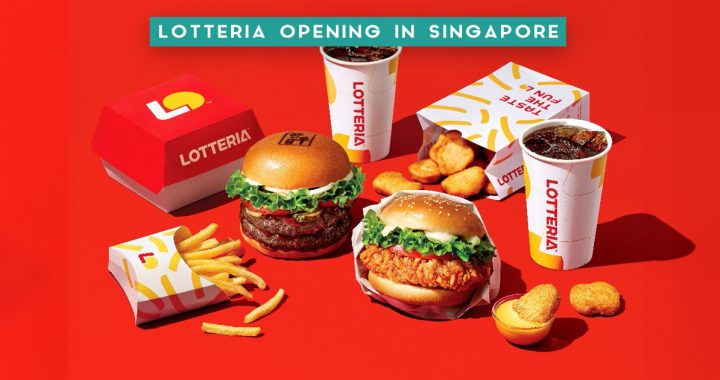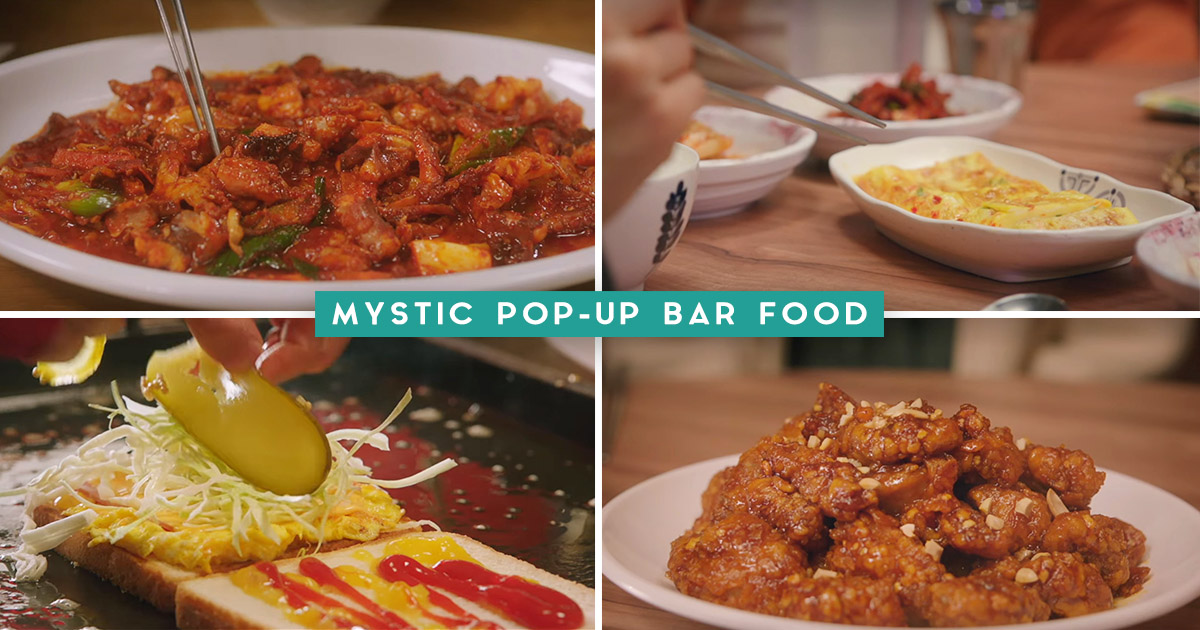
Mystic Pop-Up Bar recently aired its last episode on Netflix. If you have yet to watch the drama, it revolves around a Pojangmacha (Tent Bar), and how a woman named Weol-Ju has to resolve the grudges of 100,000 people. The drama has a Hotel Del Luna and Goblin vibe to it, but maybe because one of the main actors has acted in Goblin previously as well.
Pojangmacha is something that you need to experience in Korea. It’s a huge part of their culture and you’ll usually see one of these tents in a drama where the main character drowns his sorrows with some soju and dishes.
While we were focused on the storyline of Mystic Pop-Up Bar, we couldn’t help but notice the dishes served by Weol-Ju as well. Most pojangmachas should serve the items listed below, but you might not find all of them in a single place.
Here are 9 dishes you need to try:
Grilled Pork with Ssamjang (Episode 1)
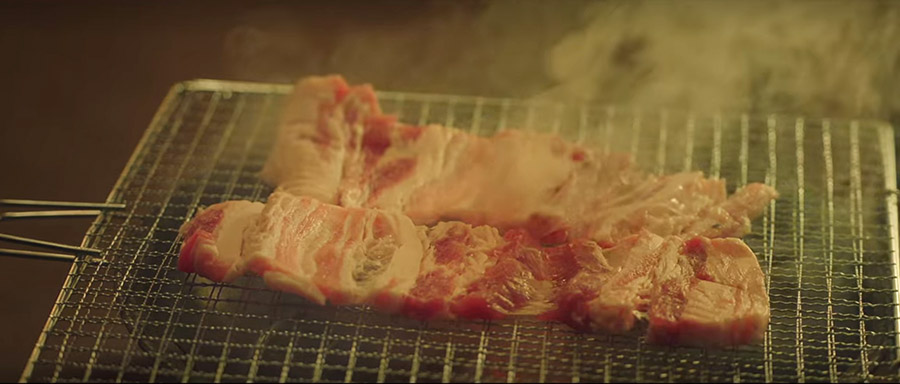
In episode 1, Weol-Ju grilled up some pork and placed it in a lettuce wrap with some special ssamjang sauce.
If you have never had Korean barbeque, you’re definitely missing out. This scene reminded us of how delicious and fun a ssam (wrap) can be. Part of the Korean BBQ experience is experimenting with different ingredient combinations to make the perfect ssam!
Ours is a lettuce wrap with grilled pork belly, ssamjang sauce, some kimchi, marinated scallions and a little bit of rice. If you’re visiting Korea, make sure to hit up a Korean BBQ store and experience this for yourself! If not, visit a local Korean restaurant or have your own KBBQ at home!
Make sure to eat it with Ssamjang!
Grilled Mackerel (Episode 2)

Also known as Saba in Japanese, this dish can also be commonly found in food courts. However, if you ever visit Korea, make sure to find some Mackerel shops that serve charcoal-grilled Mackerels.
The delicious crispy skin is paired with the soft, meaty flesh of the Mackerel slathered in a layer of oil that is released during the grilling process. A drizzle of lemon will help neutralize the oiliness while elevating the entire dish.
Stir-Fried Octopus (Episode 3)

Usually seen as a blob of intense red, stir-fried octopus can seem extremely spicy and intimidating at first. But, that’s why people like it! Once the spiciness kicks in, it acts as a great stress reliever.
Just like the show, there are plenty of restaurants in Korea that market themselves as restaurants with delicious stir-fried octopus. Some even stir fry it with Cheonyang pepper, taking the dish to a whole new level of spicy.
Make sure to order some Coolpis along with your dish, it helps relieve the burning sensation a lot. Our favourite is the peach flavoured Coolpis.
Guksu (Episode 4)
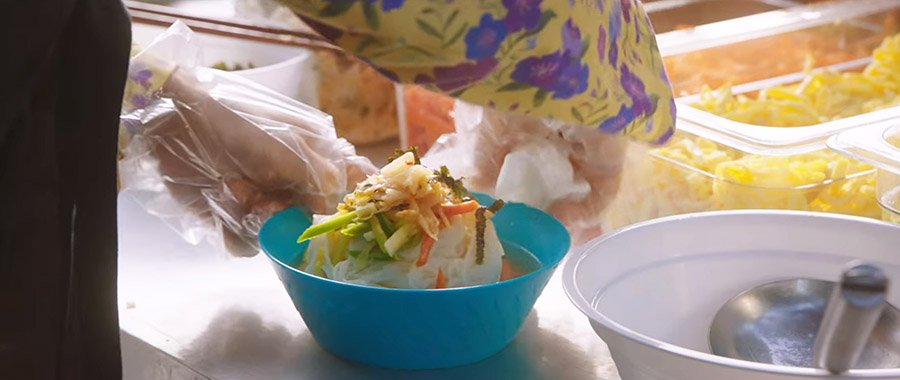
While there are different kinds of Guksu (noodles) in Korea, we were introduced to a simple type of Guksu in the beginning of the episode. When Weol-Ju asked Jin Dong’s Grandmother why she didn’t buy any meat to make noodles, she replied saying that in the past, meat was a luxury that she could not afford.
She further explained to Weol-Ju in detail on how to make this simple Guksu. Add some soy sauce and sesame oil to chopped up ripened kimchi and place it on top some noodles. The last step is to pour in the anchovy stock.
Later in the episode, we see Weol-Ju serving this dish to the kids at the orphanage along with additional toppings such as carrots and eggs.
Traditional markets in Korea are where you can easily find bowls of Guksu. The stalls are usually manned by the elderly. Despite the dish being simple looking, they are packed with flavours and will weirdly, trigger a sense of nostalgia.
Steamed Dumplings (Episode 5)
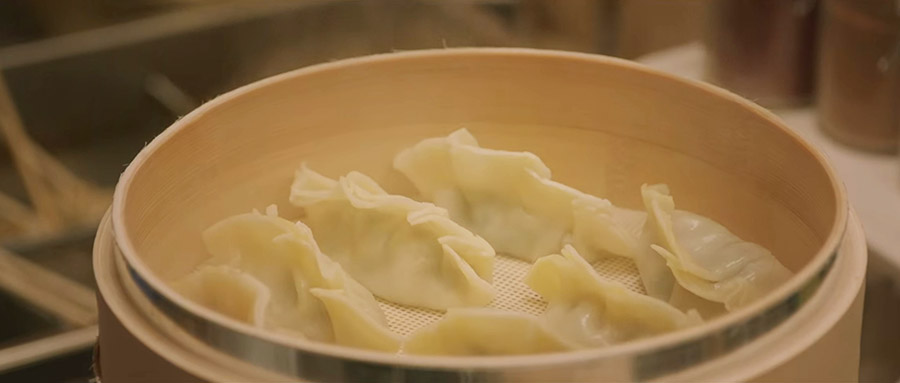
When Kang-bae was asked what his favourite dish was, he said dumplings. Simply because they were filled with meat and vegetables and all you need to do is steam them.
Korean dumplings are quite different from Chinese and Japanese dumplings. Also known as Mandu, they are filled with ingredients such as tofu and glass noodles that aren’t usually seen in gyozas and Chinese dumplings.
Korean dumplings are also mainly steamed as opposed to the Chinese and Japanese dumplings, where they can be either steamed or fried.
One of the most unique dumplings we had in Seoul were fish dumplings, and they were juicy with every bite. The explosion of juices from the first bite reminded us of Xiao Long Baos, however, the fish dumplings had thicker skin compared to Xiao Long Baos.
Dakgangjeong (Episode 6)

Dakgangjeong is a type of Korean fried chicken coated in a sweet and spicy sauce. Weol-Ju gave an important tip when it comes to eating Dakgangjeong.
Dakgangjeong tastes better when it’s cooled down a bit. As the syrup cools down, hardens the coating, it becomes crispier and sweeter.
The syrup she was referring to isn’t the sauce, but the corn syrup used in making the sauce. But listening to those words got us imagining ourselves biting into a crispy yet juicy piece of Dakgangjeong. Chimaek, anyone?
Korean Toast (Episode 8)
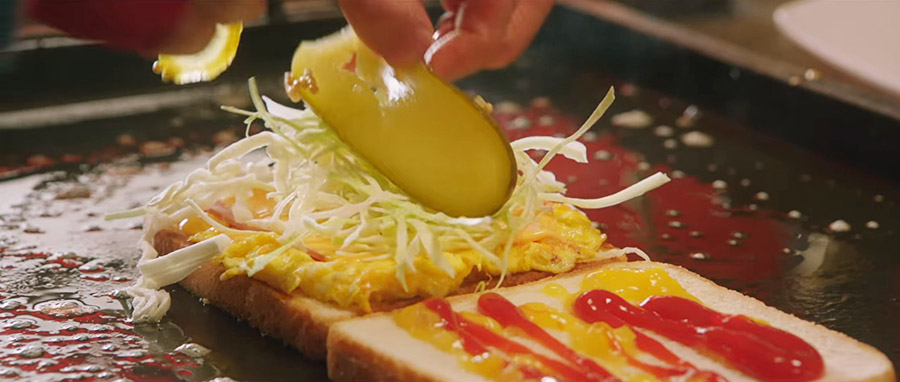
Korean toast is unlike any other toast, which is why it is a must-eat when you visit Korea. There are so many combinations available for Korean toast that it makes it hard for one to decide on a menu.
In episode 8 of Mystic Pop-Up Bar, we see Weol-Ju mixing corn and egg together to make a nice corn omelette. It is placed on buttered toast and topped up with a slice of ham, cheese, and some shredded cabbage.
The result is a sweet and savoury combination of flavours. Some places even add a sprinkle of sugar to the toast before serving it to their customers.
Since we’re talking about Korean toast, Isaac’s toast comes to mind. It’s a great place to get your Korean toast cravings satisfied, and how lucky are we to have a kiosk located in Plaza Singapura’s basement?!
Rolled Omelette (Episode 9)

While you can order rolled omelettes in some pojangmachas, they are also served as a side dish in restaurants. If you’re lucky, some come with cheese, like the one we saw in episode 9. If you’re really lucky, you can even ask for refills.
A rolled omelette is a relatively easy dish to make if you have a rectangular frying pan.
Tteokbokki (Episode 10)
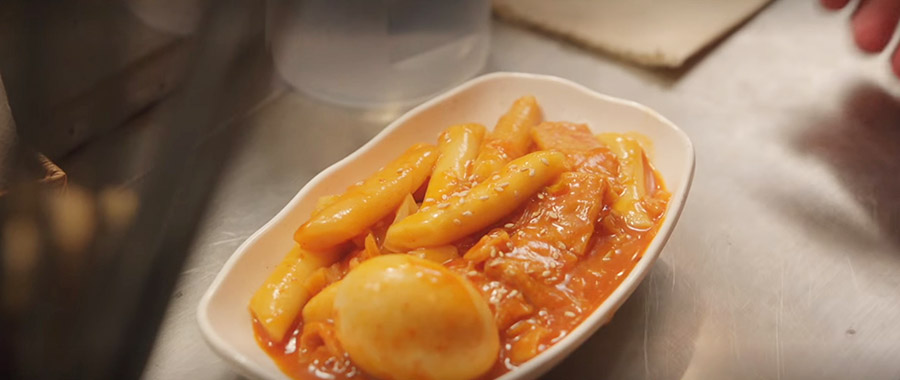
The most common form of tteokbokki is the one seen in episode 10, served in red coloured tteokbokki sauce with slices of fish cake. However, a Royal Tteokbokki was also mentioned in episode 10.
Royal Tteokbokki, also known as Gungjung Tteokbokki, is a soy sauce-based non-spicy version of tteokbokki. It contains lots of ingredients such as mushrooms and vegetables. Gungjung Tteokbokki is not as easily found compared to the ones easily seen on the streets.
If you’re searching for non-spicy Tteokbokki, Tongin Market has Kireum Tteokbokki (Pan Fried Tteokbokki) in both spicy and non-spicy versions. Don’t be surprised when you see it, it’s meant to be sauce-less.
You don’t have to starve your Korean food craving as some of the above dishes can be found in Singapore as well. What’s your favourite dish from the Mystic Pop-Up Bar drama?
For other K-drama related articles
- Park Seo Joon’s Hairstyle in Itaewon Class
- 6 Lessons Learnt from World of the Married
- 7 Upcoming Korean Dramas We Can’t Wait to Watch
*Follow MiddleClass.sg on Facebook, Instagram and Telegram for more food, travel and trending stories!




